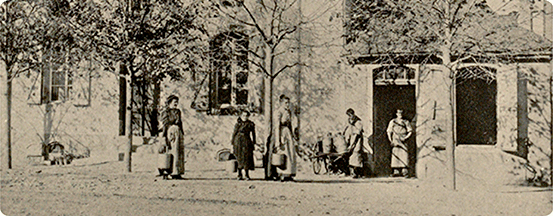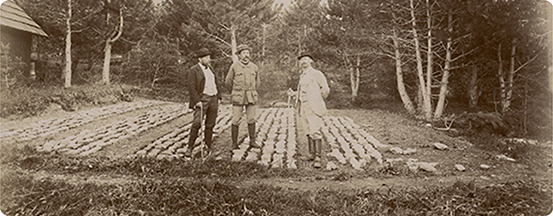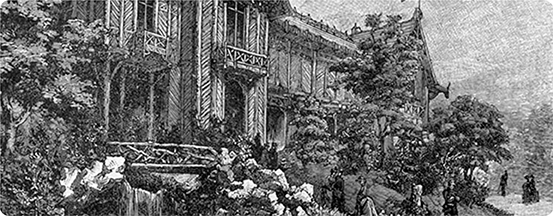Fewer sheep, more dairies
At the end of the 19th century, the policy of restoring land in the mountains imposes the reforestation of traditional rangelands, which entails the expropriation of peasants and prohibits them from grazing their sheep and goats. Faced with this unfavourable situation for mountain dwellers, some foresters encourage them to develop cattle rearing, which enables them to produce butter and cheese, processed products that provide a better income.

“The dairy cow makes the mountain prosper. The goat or the sheep ruins it”
From 1860 onwards, the successive reforestation policies implemented by the mountain land restoration services (abbreviated RTM in French) had a considerable impact on grazing areas. Herds of sheep and goats had to be excluded from the areas to be reforested in order to prevent the animals from damaging the young tree seedlings. The sources of income of the poorest mountain dwellers grazing their animals on communal land were therefore threatened.
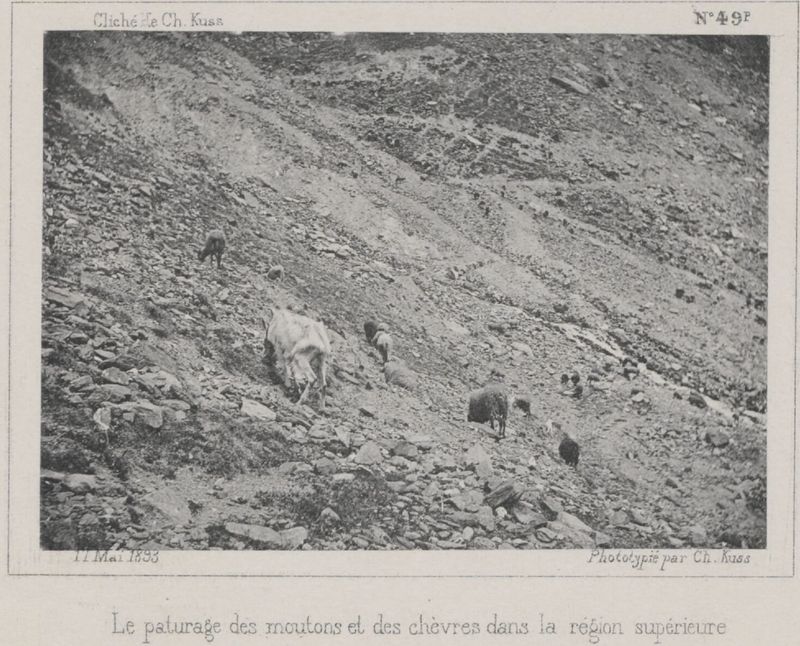
Grollaz torrent. Sheep and goat grazing in the upper region. Charles Kuss. 1893
The measures enacted are intended for “poor populations who live in a very harsh climate, and for whom any hindrance to livestock grazing, their only industry, seems intolerable”, as Guyot notes in his Cours de Droit forestier (Forestry Law Course. In French).
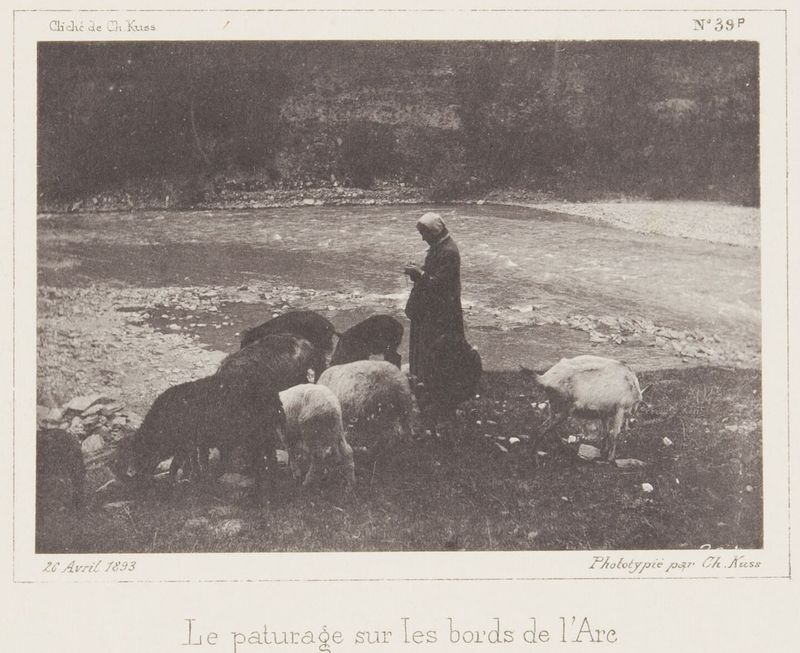
Grazing on the banks of the Arc. Charles Kuss. 1893
In order to keep livestock breeders and shepherds in the area, they have to be offered alternative sources of income. A number of levers are implemented, under the impetus of certain Leplaysian foresters, including the Buffault brothers, Félix Briot, Lucien-Albert Fabre and Auguste Calvet. The aim is to reduce the number of sheep in favour of cattle, less damaging to the environment.
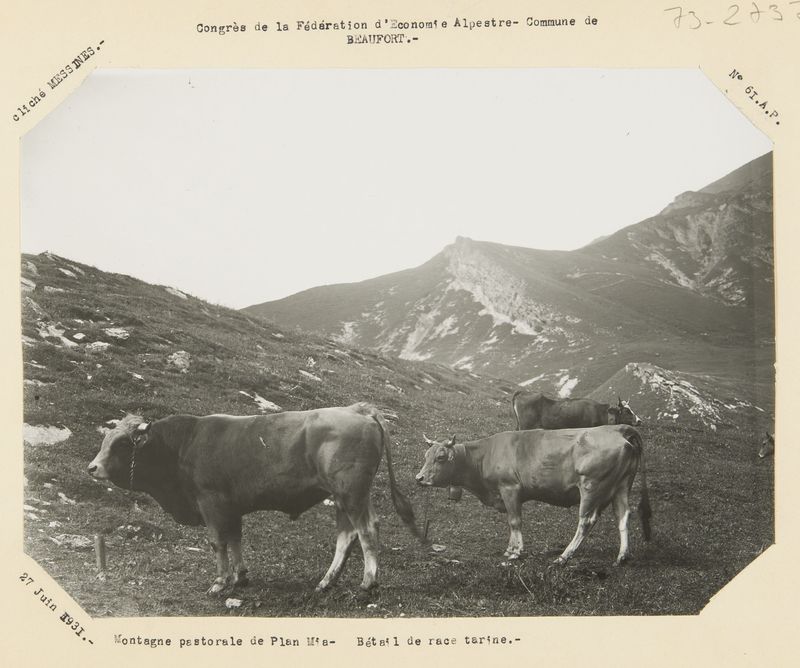
Congrès de la Fédération d'Économie Alpestre (Congress of the Federation of Alpine Economy. In French.). Municipality of Beaufort. N° 61 A.P. Pastoral mountain of the Mia plane. Tarentaise cattle / Jean Messines 1931
These foresters are also involved in pastoral improvement, financing barns to encourage the production of fodder essential for cows in winter. Meadows are maintained and drained by creating and maintaining paths and tracks, shelters, watering troughs and irrigation channels.
They also support the development of dairies in the Alps and Pyrenees, based on the old model of the Franche-Comté and Jura dairies.
Subsidised dairy cooperatives (fruitières)
“Fruitière: company, association formed for the production of cheeses, in the Jura. (Dictionnaire de la langue française (Dictionary of the French language), Le Littré, volume 2, 1873-1874
Although these dairy cooperatives (frutières) are not established by them, the foresters do encourage their set up and modernisation. They operate on the model of a pastoral economy based on cheese, inspired by the Vosges, the Jura and Switzerland; by 1875, there are already thirty-eight fruitières in Queyras making blue cheese, Gex-style cheese and butter. The law of 1882 provides specific subsidies for fruitières in all restoration areas.
The dairy cooperatives are encouraged to acquire high-performance equipment and to provide better training for local cheesemakers so as not to be dependent on Swiss cheesemakers, who account for the vast majority of qualified cheesemakers in the French Alps at the end of the 19th century.
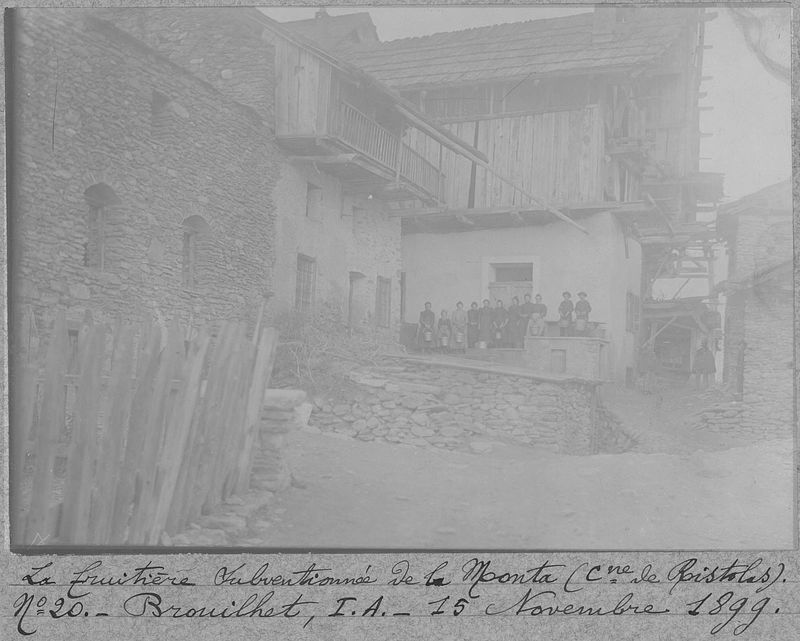
The subsidised dairy at La Monta, Risotals municipality, Ristolas municipality, Brouilhet 1899
From 1875, with funds from the French State and the departments, model dairies are established. In 1877, four are opened in the Hautes-Alpes at Ristolas, Plaine en Champsaur, Orcières and Chapelle-en-Valgodemar, followed in 1880 by St Laurent en Champsaur. In 1889, at the La Chapelle dairy, a centrifugal machine with arms is tested in order to facilitate the production of butter.
Dairy schools are set up beginning in 1883. In 1897, eleven are operational and train forty-two young people each year.
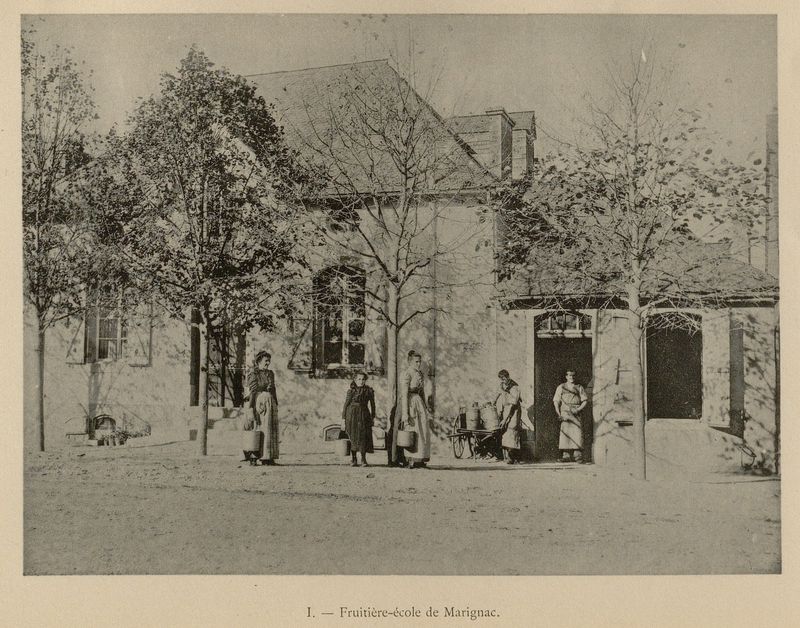
Dairy school at Marignac, in "Restauration et conservation des terrains en montagne, Les fruitières de la Haute Garonne" (restoration and conservation of mountain land, the dairy cooperatives of the Haute Garonne.) M. Buisson, 1900. (In French)
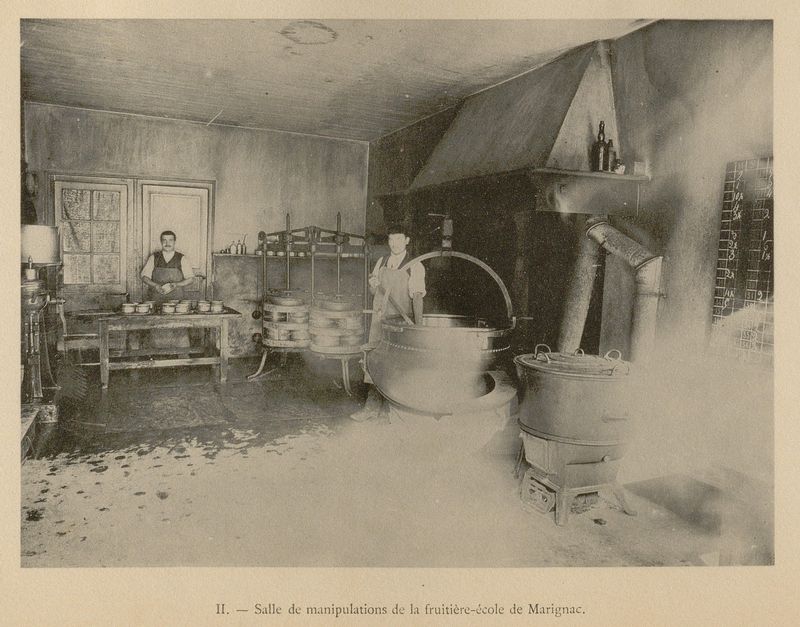
Handling room of the dairy school, in "Restauration et conservation des terrains en montagne, Les fruitières de la Haute Garonne" (restoration and conservation of mountain land, the dairy cooperatives of the Haute Garonne) M. Buisson, 1900. (In French)
These are state-subsidised apprenticeship schools set up in working dairies. The course lasts one year, and candidates over 17 years of age are admitted after an entrance examination. Grants may be awarded to students. The teaching is both practical, given by a master cheesemaker, and theoretical, given by the local schoolteacher.
Bibliography
Les alpes françaises. Études sur l’économie alpestre et l’application de la loi du 4 avril 1882 à la restauration et à l’amélioration des pâturages F.Briot. 1896.(The French Alps. Studies on the alpine economy and the application of the law of 4 April 1882 to the restoration and improvement of pastures. In French). F. Briot. 1896
Rapports et délibérations, conseil général des hautes alpes. Août 1889. Améliorations rurales : des fruitières. P. 311 – 319 (Reports and deliberations, High Alps General Council. August 1889. Rural improvements: dairy cooperatives. Pages 311-319. In French)
L’industrie laitière et les fruitières-écoles dans les Alpes : rapport adressé le 3 avril 1897 à M. le ministre de l’Agriculture / par M. H. Friant (The dairy industry and dairy schools in the Alps: report submitted to the Minister of Agriculture on 3 April 1897 / by MH Friant. In French)
Exposition universelle de 1900, rapports du jury international, classe 5, enseignement spécial agricole. Tome 1. Léon Dabat (1900 Universal Exhibition, reports of the international jury, class 5, special agricultural teaching. Volume 1. Léon Dabat. In French).
Répertoire administratif : journal complémentaire du formulaire municipal. Janv 1888. Tome V, 6e série, (P.181. programme de formation et recrutement des fruitières écoles). (Administrative directory: supplementary journal to the municipal form. Jan 1888. Volume V, 6th series, (P.181. training and recruitment programme for dairy schools) In French).
Les fruitières fromagères des Hautes-Alpes. Un siècle d’histoire (1850-1950) Philippe Moustier (The dairies of the Hautes-Alpes. A century of history (1850-1950) Philippe Moustier. In French)
Manuel de l’arbre pour l’enseignement sylvopastoral dans les écoles : l’arbre, la forêt et les pâturages de montagne par E. Cardot, 1907. (Handbook on trees for sylvopastoral education in schools: trees, forests and mountain pastures by E. Cardot, 1907. In French)
Reboisement des montagnes, compte rendu des travaux exécutes en 1876, 1877 et 1878. Rapport au ministre de l’agriculture et du commerce. 1880.(Reforestation of mountains, report on work carried out in 1876, 1877 and 1878. Report to the Minister of Agriculture and Trade. 1880. In French)
Text written by Pascale Hénaut and Catherine Tailleux (INRAE DipSO)
How to cite : Focus Agate : Fewer sheep, more dairies, Pascale Hénaut and Catherine Tailleux (INRAE - DipSO), may 2025 (https://agate.inrae.fr/agate/en/content/highlights)
Illustrations
The banner was made from a Jean Messines's photography in 1931 : Montagne pastorale de Plan Mia, traite ds vaches au piquet, dans les pâturages lors du congrès de la fédération d'économie alpestre sur la commune de Beaufort.

The thumbnail was made from a photography illustrating "les fruitières de Haute-Garonne", M. Buisson, inspecteur des eaux et forêts, 1900 : Dairy school at Marignac, 1899
